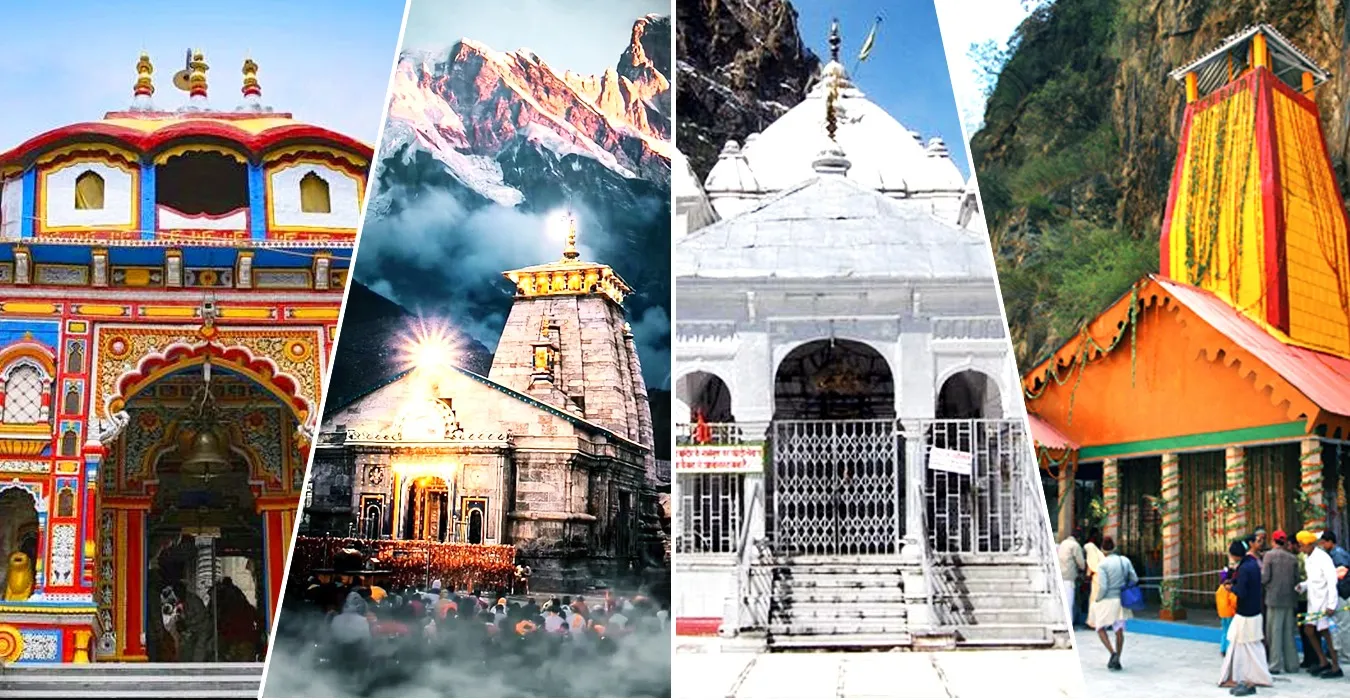Nestled amidst the towering Himalayas of Uttarakhand, the Char Dham Yatra is one of the most revered and spiritually significant pilgrimages in India. It encompasses the four sacred sites of Yamunotri, Gangotri, Kedarnath, and Badrinath, collectively known as the Char Dham. Each of these shrines has a deep connection to Hindu mythology and the spiritual heritage of India. The journey is not just a physical trek but a sacred sojourn that purifies the soul, deepens one’s faith, and offers profound insights into the eternal truths of life.
In this blog, we will take you on a spiritual and experiential journey through the Char Dham Yatra, exploring the significance of each dham, the natural beauty of Uttarakhand, and the preparation needed for this divine pilgrimage.
The Significance of Char Dham Yatra
The Char Dham Yatra in Uttarakhand is considered the ultimate pilgrimage for Hindus, as it takes the devotee closer to attaining moksha (liberation from the cycle of birth and death). The journey involves visiting four holy sites, each of which is dedicated to a specific deity and holds a unique place in Hindu tradition.
Yamunotri: The source of the Yamuna River, associated with the Goddess Yamuna.
Gangotri: The origin of the Ganges River, revered as the holiest river in India and associated with the Goddess Ganga.
Kedarnath: Dedicated to Lord Shiva, it is one of the twelve Jyotirlingas (most sacred shrines of Shiva).
Badrinath: A sacred shrine of Lord Vishnu, believed to be the dwelling place of the supreme god in his form of Badrinarayan.
The Char Dham Yatra is usually undertaken in a clockwise direction, beginning with Yamunotri and proceeding to Gangotri, Kedarnath, and finally Badrinath.
1. Yamunotri – The Sacred Source of Yamuna
Spiritual Significance
Yamunotri, the starting point of the Char Dham Yatra, is dedicated to Goddess Yamuna, the sister of Yama, the god of death. According to Hindu belief, bathing in the Yamuna purifies the soul and ensures protection from untimely death. Yamunotri marks the origin of the sacred Yamuna River, which is believed to cleanse the sins of its devotees, making it a vital part of the spiritual journey.
The Journey to Yamunotri
The trek to Yamunotri begins at Janki Chatti, a small town that serves as the base camp. The path is about 6 kilometers long and involves a relatively steep ascent through picturesque landscapes, waterfalls, and lush greenery. The journey is both challenging and rewarding, as pilgrims walk through dense forests and mountain ridges.
At the Yamunotri temple, devotees worship the Divya Shila, a sacred rock pillar before offering prayers to the goddess. Close to the temple is the famous Surya Kund, a hot spring where pilgrims cook rice and potatoes as offerings to the deity, symbolizing gratitude for sustenance.
2. Gangotri – The Birthplace of the Ganges
Spiritual Significance
Gangotri is the spiritual source of the Ganga River, known as the lifeline of India and revered as Mother Ganga. The story of Ganga’s descent from heaven to Earth is central to Hindu mythology, and it is said that her waters have the power to wash away the sins of humanity. At Gangotri, the Goddess Ganga is worshipped in her river form, and the waters are believed to be imbued with divine grace.
The Journey to Gangotri
The journey to Gangotri offers some of the most awe-inspiring views of the Himalayas, with snow-capped peaks and pristine valleys. The road to Gangotri winds along the Bhagirathi River, and the route is dotted with small villages, pine forests, and apple orchards.
The Gangotri Temple, located at an elevation of 3,100 meters, is a simple yet beautiful shrine dedicated to Goddess Ganga. The real source of the river, however, is at Gaumukh, the snout of the Gangotri Glacier, which is a further 18-kilometer trek from Gangotri. Many adventurous pilgrims choose to make the trek to Gaumukh for a closer connection with the divine source of the Ganges.
At Gangotri, the Aarti of the Ganga (evening prayer ceremony) by the riverbank is an enchanting experience, with the sounds of hymns, bells, and the flowing river creating an atmosphere of deep spiritual devotion.
3. Kedarnath – The Sacred Abode of Lord Shiva
Spiritual Significance
Kedarnath, one of the most revered Jyotirlingas, is dedicated to Lord Shiva, the destroyer of evil and the god of transformation. The temple’s remote location, surrounded by the Kedarnath Range, adds to its mystical allure. According to legend, after the Mahabharata war, the Pandavas sought forgiveness from Lord Shiva for the sins of battle, and it was at Kedarnath that Shiva finally forgave them in the form of a Shivalingam (sacred symbol of Shiva).
The Journey to Kedarnath
The trek to Kedarnath is considered the most challenging of the Char Dham Yatra. Starting from Gaurikund, the trek involves a steep 16-kilometer climb through rocky terrain, narrow paths, and breathtaking scenery. Ponies and palanquins are available for those who need assistance, but for many, the physical challenge of the journey is seen as an act of devotion.
The Kedarnath Temple, set against the backdrop of towering snow-covered peaks, is an architectural marvel that dates back over a thousand years. Despite the region’s harsh weather conditions, the temple has withstood the test of time and remains a powerful symbol of faith.
The devastating floods of 2013 severely damaged the surrounding area, but the temple itself remained largely intact, further cementing its spiritual significance for believers. Pilgrims come from far and wide to seek Shiva’s blessings and to feel the divine presence that pervades the air.
4. Badrinath – The Abode of Lord Vishnu
Spiritual Significance
The final stop on the Char Dham Yatra is Badrinath, dedicated to Lord Vishnu in his form as Badrinarayan. According to mythology, Badrinath is where Lord Vishnu meditated under a Badri tree (berry tree) for thousands of years for the welfare of humanity. The temple is situated along the Alaknanda River and is surrounded by the towering Nar and Narayan mountain ranges, adding to its majestic presence.
The Journey to Badrinath
The road to Badrinath is a scenic and spiritual journey in itself, winding through the lush green valleys and steep cliffs of Uttarakhand. The temple, located at an altitude of 3,300 meters, is one of the most important pilgrimage sites for Vaishnavites (followers of Lord Vishnu).
The Badrinath Temple is a striking structure with a colorful facade and a gold-gilded roof. The inner sanctum houses the black stone idol of Lord Badrinarayan, which is said to have been discovered by the great sage Adi Shankaracharya in the 9th century.
Apart from its religious significance, Badrinath offers several other attractions for spiritual seekers. The nearby Tapt Kund, a natural hot spring, is believed to have healing properties, and pilgrims traditionally take a dip here before entering the temple.
The Spiritual Essence of the Char Dham Yatra
While the Char Dham Yatra is a physically demanding journey through rugged mountains, it is also a profound spiritual experience. The harsh terrain and high altitude test one’s physical endurance, while the sacred sites and the legends associated with them inspire devotion and introspection. Each dham holds unique energy, and the collective experience of visiting all four shrines can lead to a deeper connection with the divine.
For many pilgrims, the Char Dham Yatra represents not just a pilgrimage to holy sites but a metaphor for life’s spiritual journey. The rivers and mountains, which stand as symbols of strength, purification, and transformation, serve as a reminder of the need to rise above material attachments and seek spiritual truth.
Practical Tips for the Char Dham Yatra
Best Time to Visit: The Char Dham Yatra typically begins in late April or early May and continues until October, depending on weather conditions. The months of May and June, as well as September and October, are ideal for pilgrimage, as the weather is relatively mild.
Health and Fitness: The pilgrimage involves a great deal of walking and trekking at high altitudes, especially at Kedarnath. It is advisable to undergo a medical check-up before embarking on the journey, particularly if you have any pre-existing health conditions. Walking, breathing exercises, and some cardio training will help improve stamina.
Clothing and Gear: The weather in Uttarakhand can be unpredictable, with cold nights and sudden rain showers even in summer. Pack warm clothing, rain gear, comfortable walking shoes, and essentials like sunscreen, sunglasses, and a hat. For the Kedarnath trek, a walking stick can be helpful.
Accommodation: Pilgrims can find accommodation in guesthouses, lodges, and dharamshalas (pilgrim rest houses) along the route. While these are basic, they provide all the necessary amenities for a comfortable stay. Early booking is recommended during peak pilgrimage season.
Respect Local Customs: The Char Dham sites are deeply sacred, and visitors should dress modestly and behave respectfully. Smoking, alcohol, and non-vegetarian food are strictly prohibited at the pilgrimage sites.
Conclusion
The Char Dham Yatra is a pilgrimage of immense spiritual significance, offering a transformative experience in the lap of the Himalayas. Whether it is the sacred waters of the Ganges at Gangotri, the divine blessings of Lord Shiva at Kedarnath, or the serene presence of Lord Vishnu at Badrinath, each dham provides a unique opportunity for reflection, devotion, and spiritual growth.
For those seeking a deeper connection with the divine, the Char Dham Yatra is not just a journey through mountains but a sacred passage through the heart and soul, guiding one toward a higher plane of existence and understanding.









